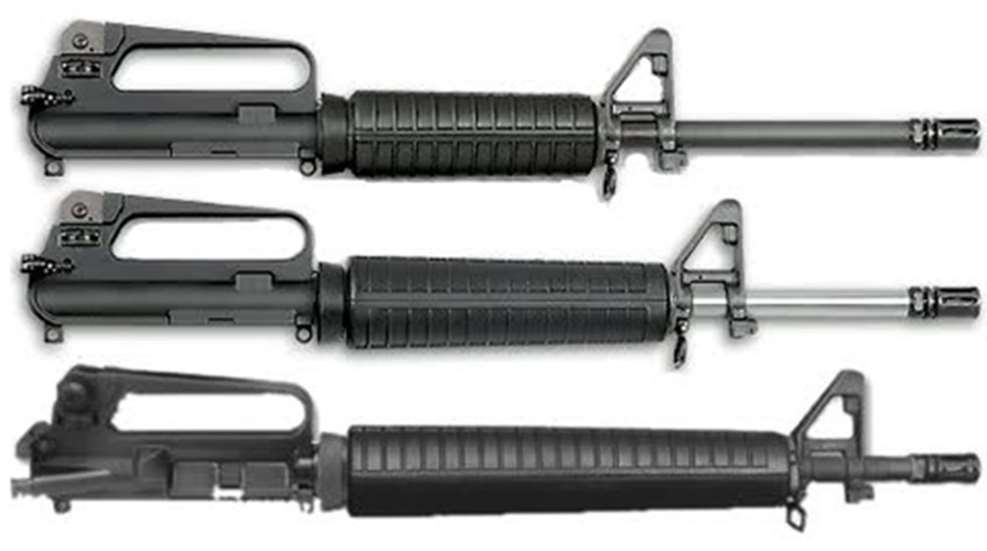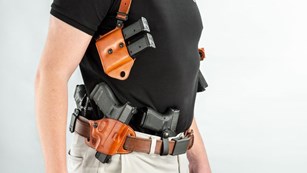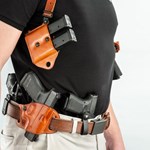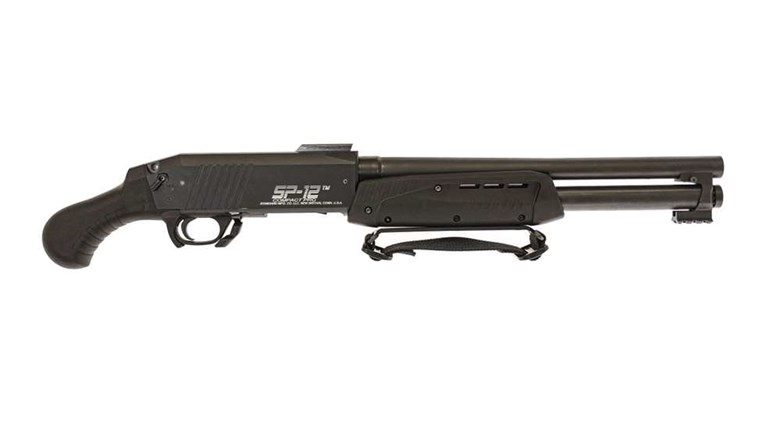
1. Recoil Operation
When the cartridge is fired, the barrel and bolt are allowed to recoil rearward for a short distance while locked together. The bolt and barrel are then unlocked, further rearward movement of the barrel stopped, and the bolt allowed to continue rearward against the pressure of the recoil spring. At the end of the bolt's travel, the recoil spring returns the bolt and barrel into battery. The length of bolt travel determines whether the system is short- or long-recoil.
For short-recoil, the bolt travel is less than the overall cartridge length. This system is very popular, as it is compact and light.
For long-recoil, the bolt travel distance is the same or more than the overall cartridge length. This system is rare, as it is expensive and heavy.
2. Gas Operation
This operating mechanism uses hot, expanding propellant gases bled from the barrel or trapped at the muzzle to cycle the action. There are two basic systems of gas operation.
The first is direct impingement on the bolt via gas tube. In this case, propellant gases bled from the barrel through a small hole travel through a gas tube to be directed against a surface on the bolt. The energy in the gas causes the bolt to unlock and move rearward against recoil spring pressure.
The second type of gas operation system is direct impingement via piston and rod.
3. Short-Stroke Piston
Propellant gases are bled from the barrel through small axial hole(s) into a gas block. The gas block redirects the gas flow against a captive but movable piston in the gas block, a fixed piston on the operating rod or an indeterminate piston rod. The short power stroke acts on the operating rod(s), causing them to move rearward, unlocking the bolt and pushing it rearward against the pressure of the recoil spring.
4. Long-Stroke Piston
Propellant gases are bled from the barrel through small axial hole(s) into an expansion tube where they act directly on a gas piston attached to the operating rod. Many systems of this type have an adjustable valve assembly that enables teh shooter to vary the amount of gas bled into the expansion tube to suit climatic conditions and ballistic variations. Also common are gas vent holes in the expansion chamber to bleed off any excess gas pressure.
5. Muzzle Gas Trap
This type of system traps propellant gas at the muzzle in a chamber that redirects the gas pressure against a piston attached to the operating rod. This system has not proven popular.
6. Blowback/Inertia Operation
There are two types of blowback/inertia operation.
The first is direct or straight. The unlocked bolt is pushed rearward against its own inertia and recoil spring pressure by the back thrust from the breech pressure to drop to safe levels. This system is suitable for use with cartridges developing less than 40,000 psi of breech pressure.
The second is delayed. Engagement surfaces or gas pressure delay the opening of the bolt until the breech pressure drops to safe levels. This system is suitable for use with cartridges having average breech pressures in excess of 40,000 psi. This system requires a fluted chamber.






































